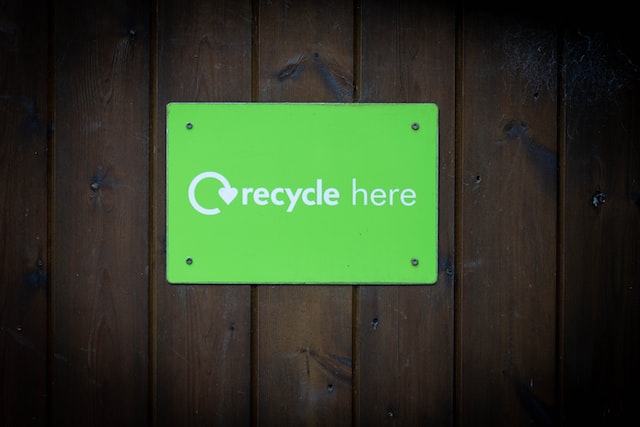Redemption centers, also known as recycling centers, bottle redemption centers, and scrap metal recyclers, provide an important service to their local communities. Not only do they keep recyclable materials out of landfills, but they also generate income for their owners.
So, exactly how do redemption centers make money?
There are five primary ways: materials processing, bottle and can deposits, equipment rentals, commissions from municipalities, and grants.
In this article, we will discuss each of these sources of revenue in detail.
Why Are Redemption Centers Important?
Before we get into how redemption centers make money, it’s important to understand why they are so important to modern society.
One of the imperatives that the planet faces is how to deal with the massive amount of waste that we generate. The average person in the US generates about four pounds of trash each day, and that number is only going to increase as our population and consumption grow.
While some of this trash can be recycled or composted, a significant portion still ends up in landfills. As mentioned earlier, redemption centers keep recyclable materials out of landfills.
This makes redemption centers a crucial link in our effort to preserve our limited natural resources and protect the environment.
How Do Redemption Centers Make Money?
Redemption Centers play a critical role in the recycling industry and are able to generate revenue from a variety of sources. The most common include:
- Processing of Materials
- Bottle and Can deposits
- Equipment Rentals
- Commissions from Municipalities
- Grants
Let’s look at each of these more closely.
#1. Processing Materials
People who recycle often take their materials to a redemption center to be processed. The most common material redeemed is aluminum cans. Other popular items include glass bottles, plastic bottles
Processing of Materials involves the breaking down of materials into their base components which can then be sold as scrap.
For example, a redemption center might process aluminum cans into ingots that can be sold to manufacturers. Another example includes breaking down glass bottles into cullet which can be used to make new glass products.
The value of the materials that a redemption center can process will depend on the quality of the material and the current market conditions.
#2. Bottle and Can Deposits
In many states, a deposit is placed on bottles and cans when they are purchased. This deposit is refunded when the container is returned to a redemption center. The amount of the deposit varies by state but is typically between $0.05 and $0.15 per container.
Redemption Centers make money from deposits by redeeming the containers and keeping the deposit. The number of containers that a redemption center can redeem usually depends on the size of the center and how many people are recycling in the area.
#3. Equipment Rentals
Large recycling projects often require specialized equipment that can be expensive to purchase outright. As such, many companies will rent this equipment from a redemption center.
Equipment can include balers (used to compress materials into bales), compactors (used to reduce the size of materials), and shredders (used to break down materials into smaller pieces).
The rental of this equipment is typically done on a per-day or per-project basis. This can be a win-win for both the redemption center and the company renting the equipment as it allows the company to complete its project without having to make a large upfront investment.
And it allows the redemption center to generate revenue from its equipment when it’s not being used for processing materials.
#4. Commissions from Municipalities
In some cases, municipalities will contract with a redemption center to manage their recycling programs. The municipality will then pay the redemption center a commission for their services.
Contracts can include a per-ton commission for materials processed, a set monthly fee, or a combination of the two. The terms of the contract will depend on the municipality and the services that they are requesting.
For example, a municipality might contract with a redemption center to manage its bottle and can recycling program. The redemption center would then be responsible for collecting the containers, redeeming them, and keeping the deposit.
In this scenario, the municipality would likely pay the redemption center a percentage of the total value of the deposits collected.
Another example might be a municipality that contracts with a redemption center to process all of its recycling. In this case, the municipality would pay the redemption center a per-ton commission for all materials processed.
#5. Grants
Many private and government organizations offer grants to support recycling initiatives. These grants can be a significant source of revenue for redemption centers.
Organizations give grants for a variety of reasons including to support environmental initiatives, to encourage the use of recycled materials, and to promote recycling education.
Grants can also be given to support the purchase of recycling equipment, the construction of a new redemption center, or the expansion of an existing one.
Conclusion
Redemption centers play an important role in the recycling process. And while they might not be the most glamorous businesses, they are essential to keeping materials out of landfills and helping to preserve our environment.
So, how do redemption centers make money? We studied this question in this article and identified the 5 top ways in which they generate revenue. This includes materials processing, bottle and can deposits, equipment rentals, commissions from municipalities, and grants.
While the exact mix of revenue sources will vary from center to center, these are the most common ways that these businesses generate income. By understanding how they make money, we can better support their efforts to reduce waste and protect our environment. Thanks for reading!

